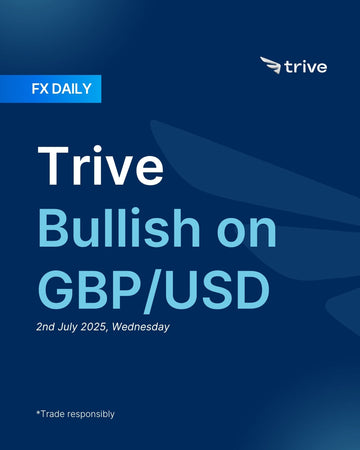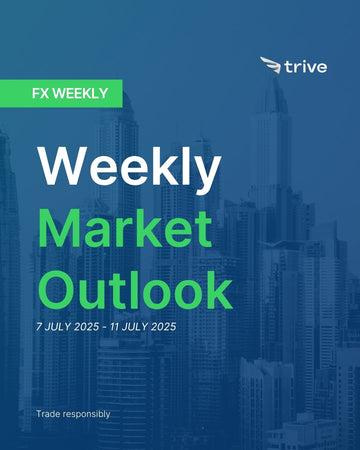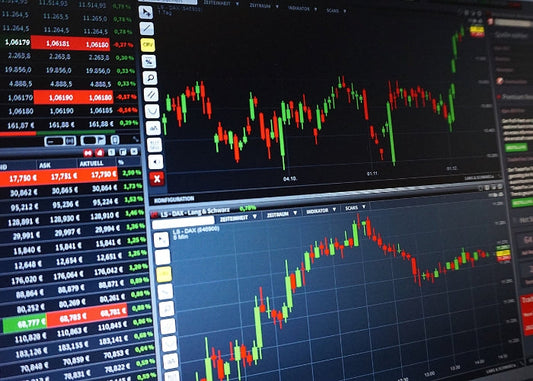FX Daily: Trive Bearish on USD/CHF

Concerns over stagflation, doubts about the Fed’s independence, and potential policy shifts under Trump continue to weigh on the US dollar’s appeal. Meanwhile, with the deadline for reciprocal tariffs approaching, heightened uncertainty around global trade may continue to support the Swiss franc—especially if the "Sell America" narrative resurfaces around July 9.
CHF: Uncertainty ahead
The Swiss Franc surged to its strongest level in over a decade, reaffirming its role as the ultimate safe haven in a week where the market’s biggest concern shifted from geopolitical risk to political instability within the United States. USD/CHF dropped sharply from above 0.8100 and broke below the key 0.8000 level, marking its strongest performance since 2011. While several currencies rallied on the back of US Dollar weakness, the franc outperformed due to a deeper shift in sentiment, as investors sought not just safety from global events but protection from growing uncertainty surrounding US institutions.
At the start of the week, the market was focused on the US-Iran conflict, which typically favors haven assets. But once that situation quickly de-escalated, attention turned to domestic US concerns—specifically, the Wall Street Journal report that President Trump was considering replacing the Fed Chair early. This triggered fears about the central bank’s independence and led to a broader crisis of confidence in US policy. Investors responded by pulling money not just out of risky assets, but also out of the dollar itself. The franc, known for its political neutrality and institutional strength, became the most attractive alternative.
A sharp fall in US Treasury yields added to the move. As expectations for Fed rate cuts increased and yields dropped, the interest rate gap between the US and Switzerland narrowed, making the franc more appealing. This likely led to a large unwinding of carry trades that had been built around the franc’s traditionally low yield.
Although the rally was mostly driven by global sentiment, Switzerland’s domestic picture also helped. The UBS Investor Sentiment index for June improved significantly, rising from -22.0 to -2.1. This sign of confidence supported the view of Switzerland as a stable and resilient economy, adding to the franc’s appeal.
On the trade front, Switzerland maintained a calm and steady posture. Reports suggested the country expected US tariffs to stay at the current 10% level beyond the July 9th deadline, which implied that negotiations were ongoing and stable. This stood in contrast to the breakdown in talks between the US and Canada, reinforcing the franc’s reputation as a haven amid growing global uncertainty.
Overall, the Swiss Franc’s rally was powered by its status as the most trusted store of value during times of institutional doubt. With confidence in US policy shaken, investors turned to the franc not just for protection against volatility, but for a sense of safety and reliability.
We’re bullish on the Swiss Franc if sentiment remains weak or uncertain, because that’s when investors typically flock to safety, and the franc is one of the most trusted places to go. This past week, doubts about US institutions and the Fed’s independence shook confidence in the dollar, and the franc rallied hard in response.
With US yields falling and carry trades unwinding, the franc became even more attractive. Switzerland’s steady economic backdrop and neutral stance added to that appeal, especially as other trade relationships, like US-Canada, were breaking down. So as long as uncertainty lingers, we think the franc will continue to outperform.
USD: Throw it away
The US Dollar dropped to multi-year lows during a week marked by a sharp shift in geopolitical tensions and rising concerns about the Federal Reserve’s independence. The DXY started the week with a sudden but brief jump to 99.42, driven by safe-haven flows after a surprise US military strike on Iranian nuclear facilities. However, the dollar’s strength quickly faded when Iran’s response was seen as mostly symbolic and a ceasefire was soon announced. This rapid de-escalation sent the dollar into decline.
Attention then turned to tensions within the Fed itself. Some policymakers supported a July rate cut, but most officials pushed back, preferring a more cautious, wait-and-see approach. The most significant moment came late Thursday, when the Wall Street Journal reported that President Trump was considering announcing a successor to Fed Chair Powell ahead of the 2026 term end. This move was widely viewed as a threat to the central bank’s independence, sending the dollar to a multi-year low of 96.99. The week ended with the dollar still under pressure, as a slightly higher-than-expected PCE inflation reading failed to offset the broader uncertainty and cooling trade tensions.
The May Core PCE Price Index, the Fed’s preferred inflation measure, came in slightly hotter than expected at 0.2% month-on-month and 2.7% year-on-year. Still, the reaction was limited by weaker figures elsewhere, including an unexpected drop in personal spending and income. A flood of data on Thursday added to the uncertainty. The final Q1 GDP was revised down to -0.5%, but the Core PCE deflator was revised up to 3.5%, raising concerns about stagflation. Jobless claims offered mixed signals, and a spike in durable goods orders was driven entirely by a large and volatile aircraft order. Consumer confidence fell unexpectedly, and both new home sales and exports dropped in May, widening the trade deficit.
The sharpest drop in the dollar followed the WSJ report about Trump possibly announcing a new Fed Chair before Powell’s term ends. Governor Waller, who is seen as dovish, was mentioned as a possible choice. Markets interpreted this as an attempt to steer the Fed in a more politically favorable, dovish direction. Within the Fed, a divide became clearer. While some like Governor Bowman and Waller supported a near-term rate cut, others including Powell, Williams, Bostic, Kashkari, and Barr favored holding off until the effects of tariffs become clearer. Despite the resistance, markets began to price in a 25 basis point rate cut by the September FOMC meeting, moving expectations forward from October.
On the geopolitical front, the week began with the US launching “Operation Midnight Hammer” against Iranian nuclear sites, which pushed oil prices and demand for the dollar higher. But within a day, the situation reversed after Iran’s limited response and a ceasefire announcement by Trump. This quick de-escalation turned into a drag on the dollar. The trade narrative also eased. The White House announced a framework deal with China, clarifying existing agreements. Reports also suggested the EU might lower tariffs on US imports to secure a deal. Officials began to downplay the importance of the July 9th tariff deadline, with some hinting that agreements could be reached by Labor Day. Meanwhile, Trump paused trade talks with Canada and threatened new tariffs over its digital services tax.
Market sentiment shifted dramatically. It started with a risk-off move supporting the dollar, but as geopolitical fears faded, the market turned toward selling the dollar. From mid-week on, the main driver of this shift was fear of US policy instability, especially concerns about the Fed’s independence following the WSJ report.
We saw a clear shift toward a bearish outlook on the dollar this week, and it mainly came down to two things: the rapid easing in geopolitical tensions and growing concerns over the Fed’s independence. The initial safe-haven boost from the US-Iran conflict faded quickly after Iran’s response was mostly symbolic and a ceasefire was announced. That de-escalation pulled risk appetite back in, weakening the dollar.
At the same time, concerns about the Fed’s independence surged after reports that Trump might replace Chair Powell early, which shook market confidence and pushed the dollar to multi-year lows. Even though Core PCE came in slightly hot, weak spending, lower income, and a GDP downgrade raised stagflation fears and limited any bullish reaction.
For these reasons, our baseline bias is bearish. However, with the PMI’s and Job Report coming up, we’ll be ready to adapt. Very strong PMI’s and a strong NFP could shift the near term bias to bullish.

USD/CHF 4H
Disclaimer
This material is provided for informational purposes only and does not constitute financial, investment, or other advice. The opinions expressed in this material are those of the author and do not necessarily reflect the views of Trive International. No opinion contained in this material constitutes a recommendation by Trive International or its author regarding any particular investment, transaction, or investment strategy. This material should not be relied upon in making any investment decision.
The information provided does not consider the individual investment objectives, financial situation, or needs of any specific investor. Investors should seek independent financial advice tailored to their individual circumstances before making any investment decisions. Trive International shall not be liable for any loss, damage, or injury arising directly or indirectly from the use of this information or from any action or decision taken as a result of using this material.
Trive International may or may not have a financial interest in the companies or securities mentioned. The value of investments may fluctuate, and investors may not get back the amount they originally invested. Past performance is not indicative of future results.
For more information about Trive International, please visit http://trive.com/int
Additional Information
Investing involves risk, including the potential loss of principal. Diversification and asset allocation strategies do not ensure a profit or guarantee against loss. The content in this material is subject to change without notice and may become outdated or inaccurate over time. Trive International does not undertake any obligation to update the information in this material.
By accessing this material, you acknowledge and agree to the terms of this disclaimer. If you do not agree with these terms, please refrain from using this information.
No comments
Home
Trive
TriveHub





0 comments